Performance Art
Aki Sasamoto: Delicate Cycle
The creator's Wikipedia page.
Posted By: Paul - Thu Jul 25, 2024 -
Comments (0)
Category: Art, Performance Art, Hygiene, Ineptness, Crudity, Talentlessness, Kitsch, and Bad Art, Asia
Episode in a small town library
Ian Breakwell's unusual photograph documents an "episode" that took place in an unnamed small town library in 1970. The episode seems to be a library user somehow transforming into, or sprouting, printed pages.
"Episode in a small town library" - Ian Breakwell, 1970
The only background information about the photograph that I've been able to find comes from Clare Qualmann's article "The Artist in the Library":
More detailed research into Breakwell's extensive archive held at Tate Britain did not provide answers in written form. Several versions of the image were published in journals, including Fotovision (August 1971), Art and Artists (February 1971) and Stand Magazine (Winter 1997). The different paper stocks that they were printed on enable more detail to be seen than the digital version that I had looked at before – in Art and Artists the photograph was reproduced on a newsprint insert to the magazine that is very different from the glossy black and white of the others. In this version, the chicken-wire frame underneath the newspaper is more visible, as are the titles on the bookshelf behind – Art and Civilization is clearly legible.
The version published in Fotovision has a completely different feel – instead of The Guardian newspaper on the table the artist holds a copy of Typographica magazine in his hands. Although this dates from 1964 (the photograph was taken in 1970), its cover design (an assemblage of logos arranged in a dense slanting pattern across the cover) juxtaposes old and new – the 'timeless' look of the traditional library space with the contemporary graphic design of the journal, and the branding that it is presenting. The existence of multiple versions suggests time spent in the space – time to shoot multiple images, test and trial different ideas and perform the image repeatedly (rather than a hit-and-runundercover-quick-photo-before-anyone-notices).
Posted By: Alex - Tue Jul 09, 2024 -
Comments (0)
Category: Photography and Photographers, Performance Art, Surrealism, Libraries, 1970s
Crying Artist
Controversy recently struck the General Theologial Seminary in New York after it invited an artist to perform in the college chapel. Details from Church Times:I know some people can cry on command, but for five hours?
The Episcopalian community thought the event sounded way too weird, forcing the seminary to cancel the performance before it happened.
Posted By: Alex - Sun Apr 14, 2024 -
Comments (2)
Category: Religion, Performance Art, Sadness
RIP Günter Brus
This video is a little gross, but hardly much by contemporary horror cinema standards.From his Wikipedia entry:
Brus was a co-founder in 1964 of Viennese Actionism (German: Wiener Aktionismus) with Otto Muehl, Hermann Nitsch, and Rudolf Schwarzkogler. His aggressively presented actionism intentionally disregarded conventions and taboos, with the intent of shocking the viewer. At the Kunst und Revolution event at the University of Vienna in 1968, Brus urinated into a glass then proceeded to cover his body in his own excrement, and during the performance Brus also sang the Austrian National Anthem while masturbating. Brus ended the piece by drinking his own urine and inducing vomiting, and was subsequently arrested. Through this piece and his other performance works, Brus hoped to reveal the still fascist essence of the nation. This performance created a public outrage at the time and the participants were dubbed by the media as uniferkel or "University Piggies." Sentenced to 6 months in prison after the event and subsequent public reactions, he fled to Berlin with his family and returned to Austria in 1976.
Posted By: Paul - Wed Feb 14, 2024 -
Comments (0)
Category: Misbehavior, Rebellion, Acting-out and General Naughtiness, Performance Art, Outrageous Excess, Europe, Twentieth Century, Nausea, Revulsion and Disgust
Pope.L, Crawl Artist, RIP
We don't want this recent death to get lost in the end-of-the-year chaos!His obituary.
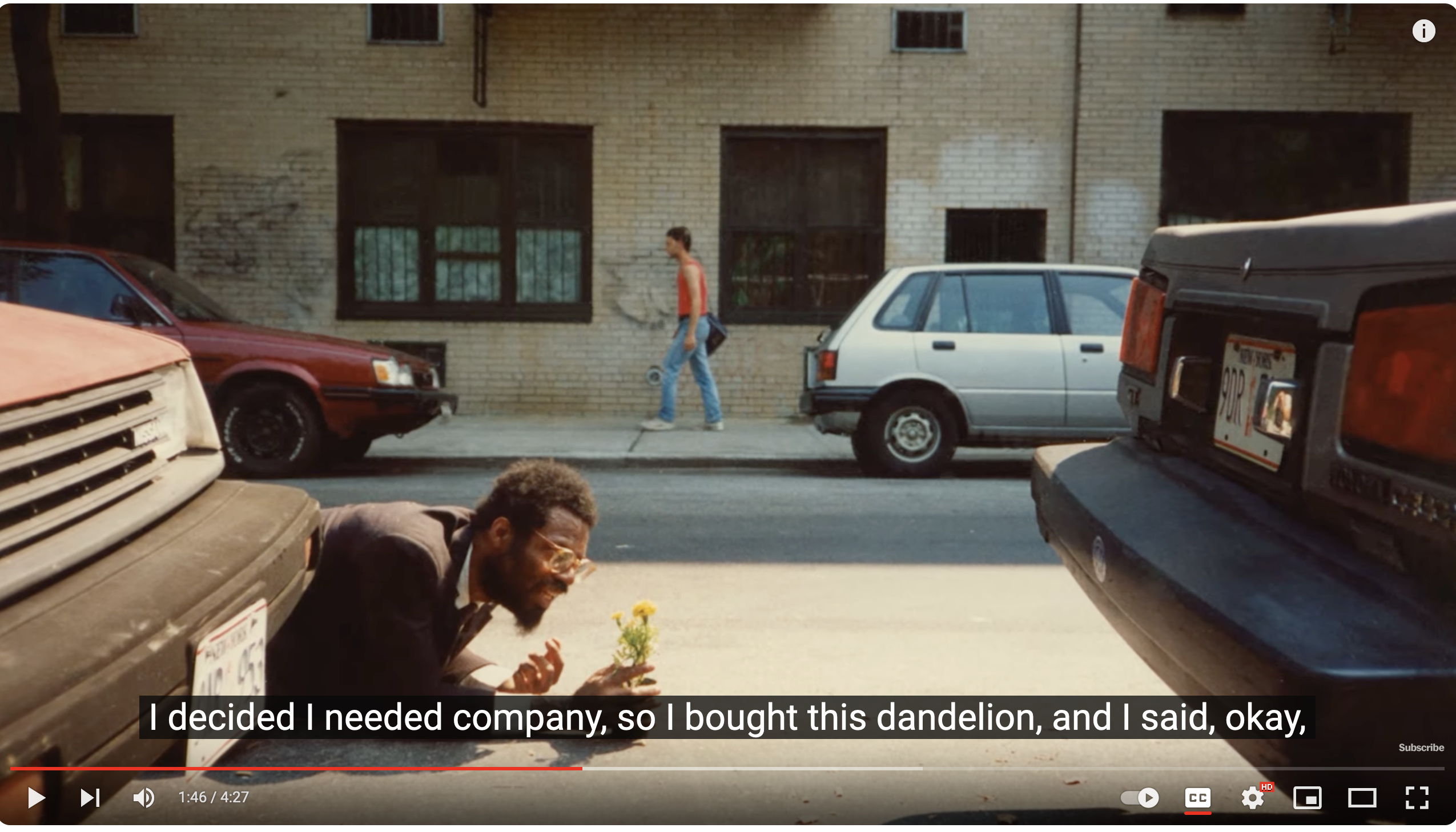
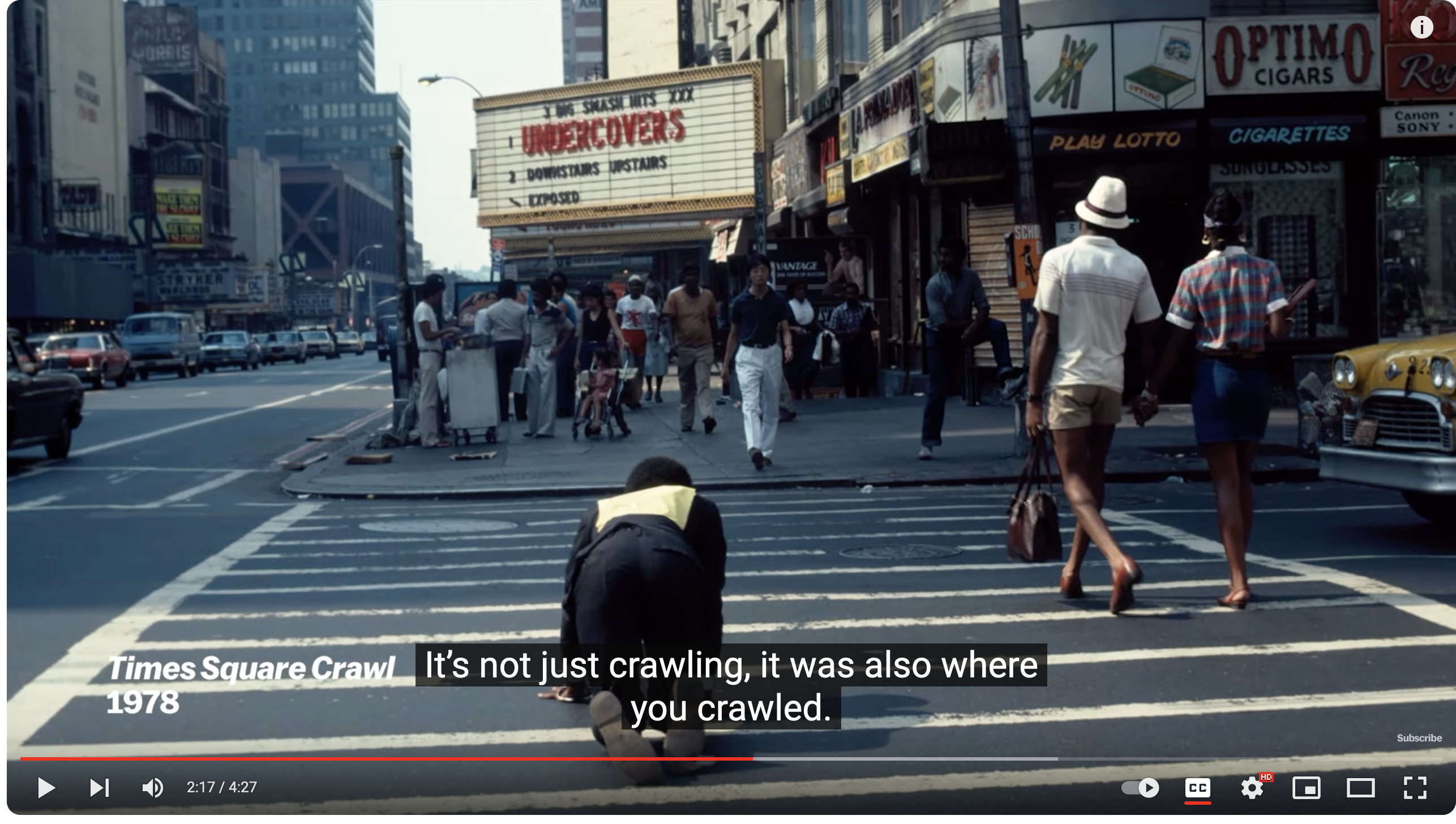
Posted By: Paul - Wed Jan 03, 2024 -
Comments (0)
Category: Urban Life, Avant Garde, Performance Art, Twentieth Century, Twenty-first Century
The First Woman to Marry a Hologram
Back in 2018 we posted about Akihiko Kondo, a Japanese man who married a hologram. His holographic wife floated inside a desktop device.Now Spanish artist Alicia Framis has announced she'll also be marrying a hologram. Her holographic partner is a life-size, three-dimensional projection powered by AI. His name is AILex.
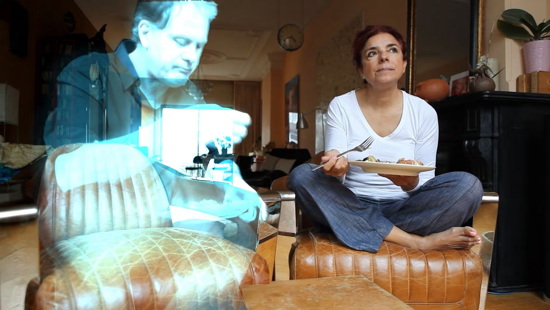
Whereas Akihiko Kondo married a hologram because, by his own admission, he had trouble forming relationships with flesh-and-blood women, Framis is marrying a hologram as a piece of performance art which she's titled "The First Woman to Marry a Hologram."
She previously lived with a mannequin named Pierre.
More info: ElPais.com, AliciaFramis.com
Posted By: Alex - Thu Dec 07, 2023 -
Comments (0)
Category: Technology, AI, Robots and Other Automatons, Performance Art, Marriage
You do the dishes
Performance artist Brian Feldman is selling tickets to a new performance — one in which you (the attendee) is the performer.This is what you get for the $17 admission price:
Each performance is an exclusive event. Just you and Feldman.
To be fair, he promises to pay you back the admission price. So the event ends up being free. But he still gets you to wash his dishes for him!
More info: eventbrite
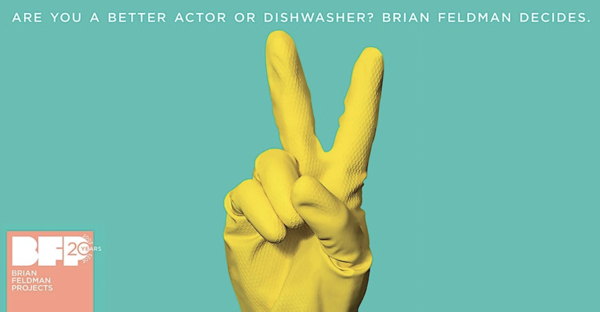
Posted By: Alex - Thu Aug 31, 2023 -
Comments (2)
Category: Performance Art
The Body/Hair Paintings of Xie Rong
The artist's home page.
Posted By: Paul - Wed Apr 26, 2023 -
Comments (2)
Category: Art, Performance Art, Ineptness, Crudity, Talentlessness, Kitsch, and Bad Art, Sticky, Messy, Sloppy, Drippy, Treacly Things, Asia
Oh Great, Now What?
Artists Paul Velick and Francis Shishim joined forces in 1975 to create the personae of "Bob & Bob." As Bob & Bob they engaged in performances such as the following:Text from Source book of California performance art.
I'm surprised the restaurants only threw them out. I figured an expensive restaurant would report you to the police, at the very least.
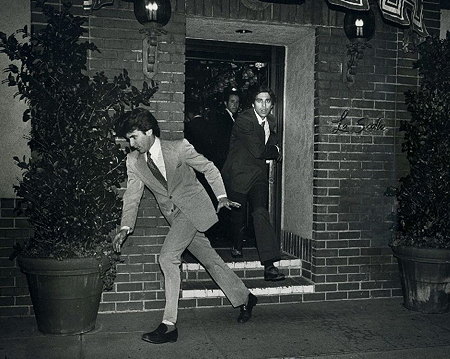
image source: BobandBob.net
Posted By: Alex - Thu Mar 30, 2023 -
Comments (2)
Category: Restaurants, Performance Art, 1970s
The Aquamen
The Aquamen are part of Machtiern, a French theater company. They wander around in public wearing fishbowl helmets, with live fish swimming around inside the helmets.Details from the Telegraph:
But wearing a fishbowl is not for the faint-hearted, Mr Manini told the Telegraph.
"It's a bit like wearing a reverse diving bell," he said, adding that it took years to perfect to avoid leaks around the neck with each bowl and suit moulded to the individual performer.
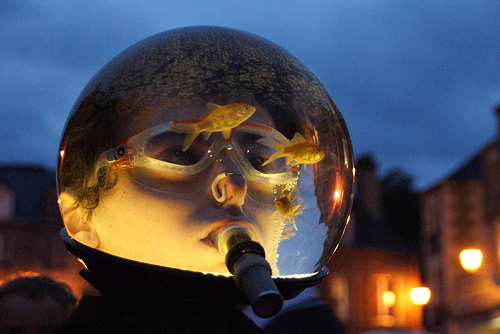
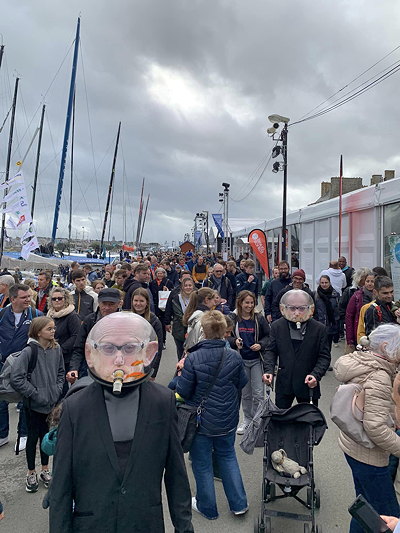
Posted By: Alex - Tue Nov 08, 2022 -
Comments (3)
Category: Performance Art, Fish, Headgear

| Who We Are |
|---|
| Alex Boese Alex is the creator and curator of the Museum of Hoaxes. He's also the author of various weird, non-fiction, science-themed books such as Elephants on Acid and Psychedelic Apes. Paul Di Filippo Paul has been paid to put weird ideas into fictional form for over thirty years, in his career as a noted science fiction writer. He has recently begun blogging on many curious topics with three fellow writers at The Inferior 4+1. Contact Us |




